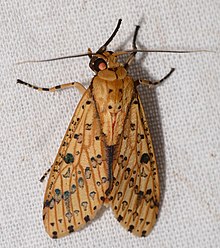
The Christmas truce was a series of widespread unofficial ceasefires along the Western Front of the First World War around Christmas 1914.
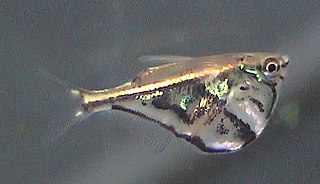
The marbled hatchetfish is a small, 3.5 cm (1.4 in) in length, freshwater ray-finned fish. The small deep-bodied fish, in the genera Carnegiella, is from the family Gasteropelecidae which includes both Gasteropelecus and Thoracocharax. Native to South America, C. strigata can be found in the Caqueta River in Columbia, the lower, middle, and upper Amazon River Basin, south of Amazon, and can be found in rivers and streams.

World War I or the First World War, also known as the Great War, was a global conflict between two coalitions: the Allies and the Central Powers. Fighting took place mainly in Europe and the Middle East, as well as in parts of Africa and the Asia-Pacific, and in Europe was characterised by trench warfare; the widespread use of artillery, machine guns, and chemical weapons (gas); and the introductions of tanks and aircraft. World War I was one of the deadliest conflicts in history, resulting in an estimated 10 million military dead and more than 20 million wounded, plus some 10 million civilian dead from causes including genocide. The movement of large numbers of people was a major factor in the deadly Spanish flu pandemic.

Haemaphlebiella is a genus of moths in the family Erebidae. The genus was described by R. J. Collins in 1962. Members of this genus are found in the northern part of South America.
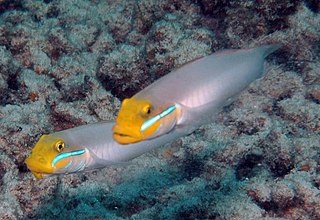
Valenciennea strigata is a species of fish in the family Gobiidae, the gobies. Its common names include the blueband goby, golden-head sleeper goby, and pennant glider. It is native to the Indian Ocean and the western Pacific Ocean where it can be found in outer lagoons and the seaward side of reefs. It occurs in a variety of substrates, sand, rubble, hard, at depths of from 1 to 25 metres. It primarily inhabits burrows dug under rubble, using them as both a nesting site and a refuge from predators. Such burrows typically have two entrances; however, only one of them is open, as the other is covered by rubble, sand, and algae. It can also be found in the aquarium trade. This species can reach a length of 18 centimetres (7.1 in) TL. It is the type species of the genus Valenciennea.

Phalacra strigata is a species of moth of the family Drepanidae first described by Brisbane Charles Somerville Warren in 1896. It is found in India, China and Taiwan.
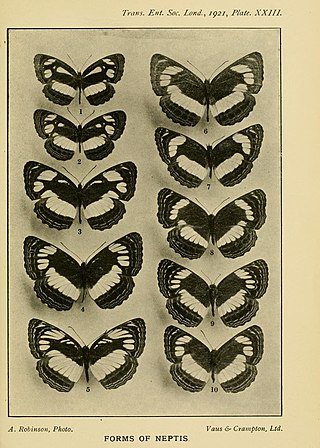
Neptis strigata, the strigate sailer, is a butterfly in the family Nymphalidae. It is found in Ivory Coast, Ghana, Nigeria, Cameroon, the Republic of the Congo, the Central African Republic, the Democratic Republic of the Congo, Uganda, Rwanda, Kenya and Tanzania. The habitat consists of dense forests.
Agaraea strigata is a moth of the family Erebidae. It was described by Reich in 1936. It is found in Colombia.

Zythos strigata is a moth of the family Geometridae first described by William Warren in 1896. It is found on Peninsular Malaysia, Borneo, Java, Bali and Palawan and Balabac Island in the Philippines.

Calliteara strigata is a moth of the family Erebidae first described by Frederic Moore in 1879.
Teleclita strigata is a moth of the family Notodontidae first described by Frederic Moore in 1879.
Haemaphlebiella formona is a moth of the family Erebidae. It was described by William Schaus in 1905. It is found in French Guiana, Guyana, Amazonas and on Cuba.
Secusio strigata is a moth in the subfamily Arctiinae. It was described by Francis Walker in 1854. It is found in Ethiopia, Kenya, Malawi, Somalia, South Africa, Tanzania, Uganda, Yemen, Zambia and India.
Virbia strigata is a moth in the family Erebidae first described by Walter Rothschild in 1910. It is found in Suriname and Brazil.

Xylorycta strigata, commonly known as the banksia web-covering borer, is a species of moth in the family Xyloryctidae. It was first described by John Lewin in 1805. It is found in Australia, where it has been recorded from New South Wales, Queensland and South Australia.
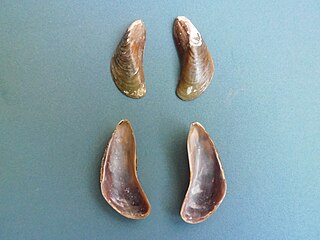
Mytella strigata is a bivalve, commonly known as the charru mussel or charrua mussel. This species was described by Sylvanus Charles Thorp Hanley based on a specimen from the Philippines. It was found in Central and South America and by Alcide d'Orbigny, a French naturalist, in 1842, where it was assigned the synonym Mytilus charruanus. They are less than an inch long (2.5 cm), and range from brown to black in color.

Pseudosermyle strigata, the striped walkingstick, is a species of walkingstick in the family Diapheromeridae. It is found in North America.
Cucullia strigata, the streaked hooded owlet or streaky falconer, is a species of moth in the family Noctuidae. It was first described by Smith in 1892 and it is found in North America.
Inscudderia strigata, known generally as the guinea-cypress katydid or striped bush katydid, is a species of phaneropterine katydid in the family Tettigoniidae. It is found in North America.
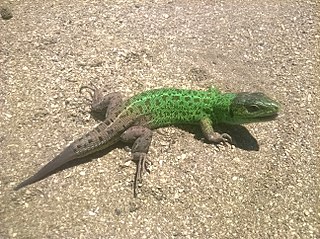
Lacerta strigata, the Caucasus emerald lizard, five-streaked lizard, or Caspian green lizard, is a species of lizard in the family Lacertidae. It is found in Georgia, Armenia, Azerbaijan, Turkmenistan, Turkey, and Iran.
